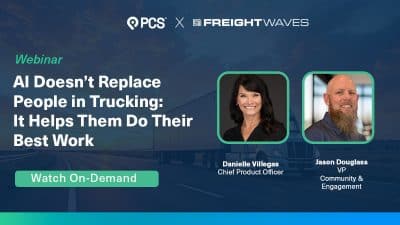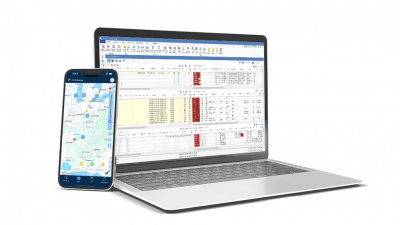Creating a Request for Proposal (RFP) is a critical step for shippers looking to invest in a new Transportation Management System (TMS). The right RFP streamlines the vendor selection process, attracting the most relevant solutions and ensuring you implement a system that aligns perfectly with your logistics needs.
RFPs are more than just formalities — they’re strategic tools that can enhance operational efficiency and long-term success. This article will guide you through the process of crafting an effective TMS RFP, helping you avoid common pitfalls and ensuring you find the best possible partner for your shipping operations.
Understanding the Transportation Management System RFP
A Transportation Management System RFP is a formal document that shippers use to outline their specific needs, goals, and requirements when purchasing a TMS solution. Whether you’re implementing a TMS for the first time or seeking a new solution, the clarity and detail of your RFP will directly impact the quality of the proposals you receive.
In addition to specifying desired features, your RFP should clearly convey your objectives and other critical requirements. Providing comprehensive information ensures that only the most suitable vendors respond, saving time and reducing the frustration of sorting through irrelevant proposals.
A well-thought-out RFP process aligns your TMS selection with broader business goals, such as improving logistics efficiency, reducing shipping costs, or optimizing freight efficiency. Setting clear expectations from the outset ensures that vendors understand your priorities, leading to more relevant and tailored proposals.
Moreover, a well-crafted RFP positions your company as a desirable customer. When vendors see that you’ve taken the time to develop an effective RFP, they’re more likely to submit detailed, thoughtful proposals, ultimately leading to better negotiation outcomes.
Key Components of a Successful TMS RFP
A successful TMS RFP must be comprehensive and detailed, covering all aspects of your logistics operations and future goals. Below are the key components that should be included:
Company Background and Logistics Overview
A detailed background on the company and its logistics is essential to set the context of your RFP. This section helps potential vendors understand the specific needs and challenges your company faces.
Include details about your current freight operations, the scale of your logistics network, and any unique requirements. For example, if your operations depend highly on multimodal transportation or LTL shipping, state this upfront. Detailed information allows vendors to tailor their proposals to your particular situation, increasing the likelihood of finding a solution that fits seamlessly with your operations.
Additionally, providing a clear picture of your logistics network helps vendors anticipate challenges and propose solutions to address them.
Project Scope and Objectives
Clearly defining the scope and objectives of your TMS project is crucial for aligning vendor proposals with your business goals. Your RFP should include the problems you hope to solve with a TMS, along with the measurable results you want to achieve.
For instance, if reducing shipping costs or enhancing route optimization are priorities, state them in detail. This clarity helps vendors understand your priorities and propose solutions that are not only technically feasible but also strategically appropriate.
It’s also important to include your long-term goals, such as scaling operations or expanding into new markets. This information will allow vendors to offer options that can grow with your business rather than ones that may become obsolete as your company evolves.
Technical and Functional Requirements
Specifying your technological and operational requirements in the RFP is crucial to ensure the TMS meets your operational needs. Start by identifying your logistics needs, such as advanced route optimization, real-time freight tracking, or automated shipment settlement.
Additionally, ask vendors about their integration partners and whether they can integrate with your existing systems. For instance, if your company uses specific ERP or WMS platforms, the TMS must integrate seamlessly to ensure smooth logistics operations.
Finally, consider the scalability of the solution. A TMS that can grow with your business will prevent the need for another RFP process in the near future. Inquire about the vendor’s technology roadmap to confirm that their solution will continue to support your evolving business needs.
Choosing Vendors Who Align with Shipper Goals
Not all TMS vendors are created equal, so it’s essential to establish criteria for evaluating proposals and how well each vendor meets your TMS requirements. You can categorize vendors using a tiered approach based on a few key factors:
- Experience: Consider the vendor’s experience and pedigree. A vendor with a deep understanding of your industry’s challenges will be better equipped to provide a solution that meets your needs.
- Innovation: A vendor that is continuously improving their product and staying ahead of industry trends will be a more valuable partner in the long term.
- Support: A TMS is a critical component of your logistics operations, requiring vendor support to ensure a smooth implementation and ongoing operation.
Our Three-Tier framework for managing bids can help you sort potential vendors quickly and efficiently. Get our free RFP guide to learn more about using this approach.
Common Mistakes to Avoid in TMS RFPs
Even if you’ve spent hours on your RFP, certain mistakes can undermine your efforts to find the best TMS solution. These errors often stem from a lack of clarity or foresight during the RFP creation process. To attract the best vendors and ensure a successful TMS deployment, avoid these pitfalls:
- Vague Requirements: Be as specific as possible about your needs. Vague or generalized requirements can lead to miscommunication and proposals that don’t meet your expectations. For example, instead of stating that you need “fleet management,” specify that you need a tool to handle vehicle maintenance and driver optimization.
- Overlooking Scalability: Ensure the TMS can scale with your business as it grows. A solution that fits today but can’t adapt to future needs will only result in more headaches down the line. Ask vendors how their solutions handle increased volume and complexity, and what their plans are for future upgrades and enhancements.
- Ignoring Vendor Alignment: Choose vendors whose long-term goals align with yours. A vendor focused on innovation and continuous improvement will be a better partner than one simply trying to make a quick sale. Consider asking vendors about their product roadmap and how they plan to stay ahead of industry trends.
Additionally, avoid the temptation to choose the cheapest solution without considering the total cost of ownership. A lower upfront cost might seem appealing, but if the solution lacks essential features or requires costly upgrades down the line, it could end up being more expensive in the long run.
The Strategic Importance of a Well-Crafted TMS RFP
A well-crafted transportation management system RFP is critical to identifying the right vendor and choosing the right solution. The right TMS can transform your logistics operations, making your business more efficient, cost-effective, and responsive to changing market conditions.
Are you ready to stop the RFP headaches and attract the perfect shipper TMS? By following the guidance in this article and downloading our comprehensive RFP guide, you can set yourself up for success in selecting the best TMS for your needs.
PCS TMS is an ideal solution for shippers seeking to optimize their operations. To learn more about how we can help you achieve your logistics goals, check out our features or schedule a demo.



